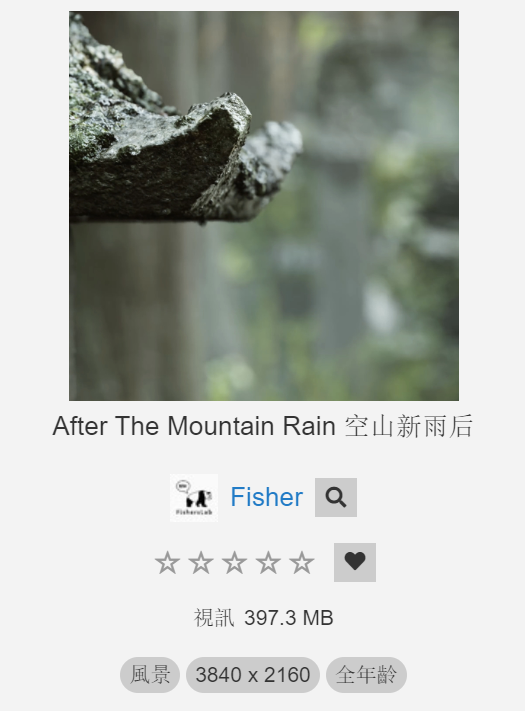After The Mountain Rain - Behind The Scene Part One

Thanks for your comments, I have received many questions in these days. Due to the time issue, please forgive me for not being able to answer them one by one. But I have sorted out the issues that most of you are watching on, and I will explain them one by one in the next few articles.
Q: Did you make these models and textures on your own?
A: No, more than 90% of the objects in the scene are directly imported from Megascans, then some fine-tuning has been made afterwards.
Such as stone path, Buddha statues, trees, ferns are from megascans. But the lady, rope and paper are not, they are mainly made of Substance.
The opening content of the second half is Megascans bridge.

Q: Are you using RTX technology?
A: I have RTX graphic cards, a TITAN RTX for desktop and a RTX 2070 Max-Q for laptop.
But the project itself does not enable real-time ray tracing (I think this is what you are asking). There are two reasons: First, according to my experience, for this kind of complex natural scene, which doesn’t have too much clear reflection or refraction, whether to use ray tracing or not doesn’t have too much difference. Second, the goal I set for myself is to run 4K 30FPS inside the editor. I know very well that if ray tracing is enabled, it will become much more difficult, so it`s not cost-effective for this project.
#So, When should I use raytracing? Well, my daily job: Automotive. Have a look of my old work, it`s Unreal + Raytracing + No Photoshop.

Q: Is this scene baked?
A: No, full real-time dynamic lighting, without any baking.
The reason why is my computer is old, so it takes too much time to bake for one time, so I just made it fully dynamic: what you see is what you get.
In addition, after watching the Demo of Unreal 5, I think that baking should become history soon. Rather than adapting to it then, it is better to do it now.
Since there is no baking, Indirect Lighting (GI) and Ambient Occlusion (AO) are implemented with SSGI + Distance Field.
The picture below is a comparison of the SSGI enabled/disabled. Pay attention to the grass at the mark area. Since SSGI is off, they become flat and "floating".

Close-up:

#My computer was assembled in 2016, the configuration is i7 6950x, 64GB memory, TITAN RTX.
Q: Can future video games achieve this quality?
A: I am not a game developer, I just know how to use Unreal Engine. If I rashly answer a cross-industry question, I might be beaten by the real developers, haha.
So I just talk about my views from a fan perspective.
First of all, if there is a game that can reach the quality of Unreal 5 Demo in the future, it will obviously be it! As shown below:

Back to Unreal Engine 4, I have a gaming laptop with an RTX 2070 Max-Q graphics card, and its performance is roughly equivalent to desktop RTX 2060/2060 Super. On this laptop, this scene can keep about 40fps at 1080p resolution.
Please notice that this is in editor, and I have not optimized it manually. I believe that if I make a proper optimization, the final released project can run stably at 1080p 60FPS, with same level visual quality. And the hardware requirements are RTX 2060 level mid-range graphic cards, which I think many people can afford of.
So, in theory, if I were to make a mountain walking simulator, it might already be possible. I know a real game needs much more than that, but I am still very confident that the future games can achieve such image quality on PC and console, I am also very looking forward to see it. For mobile games, it should be impossible to rely on the mobile phone's own computing power. Let`s look forward to 5G and cloud games.



